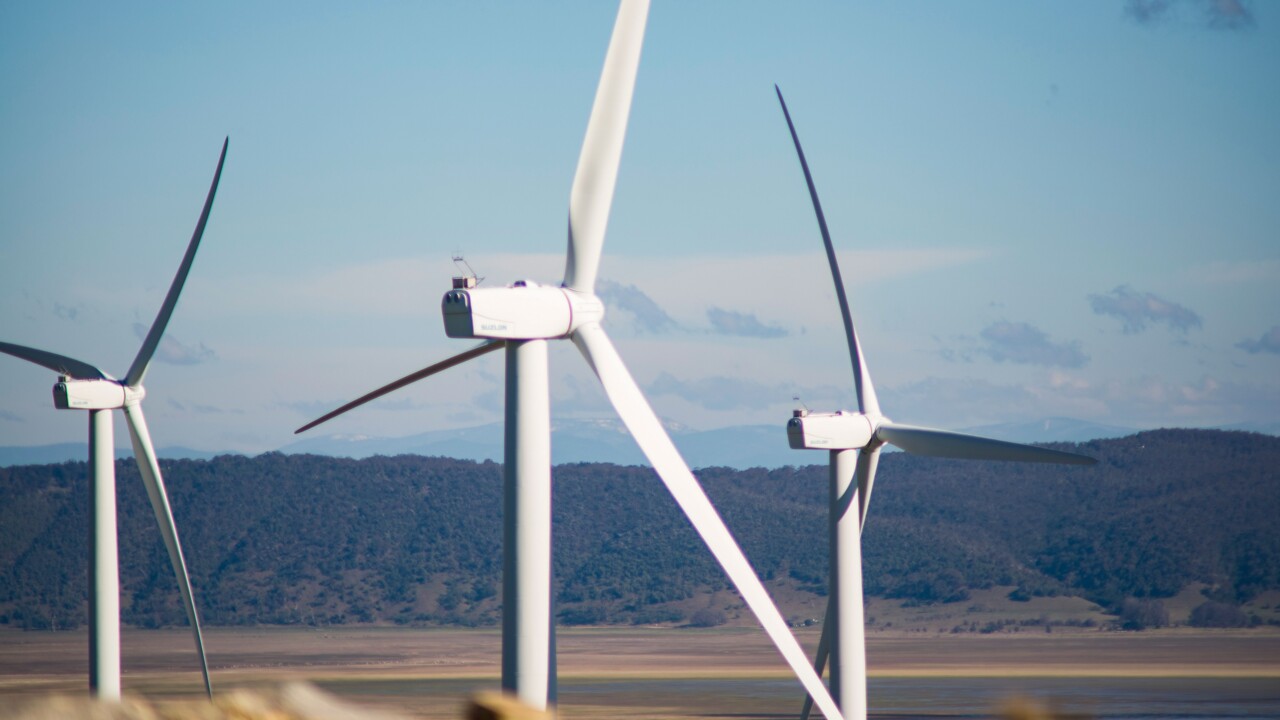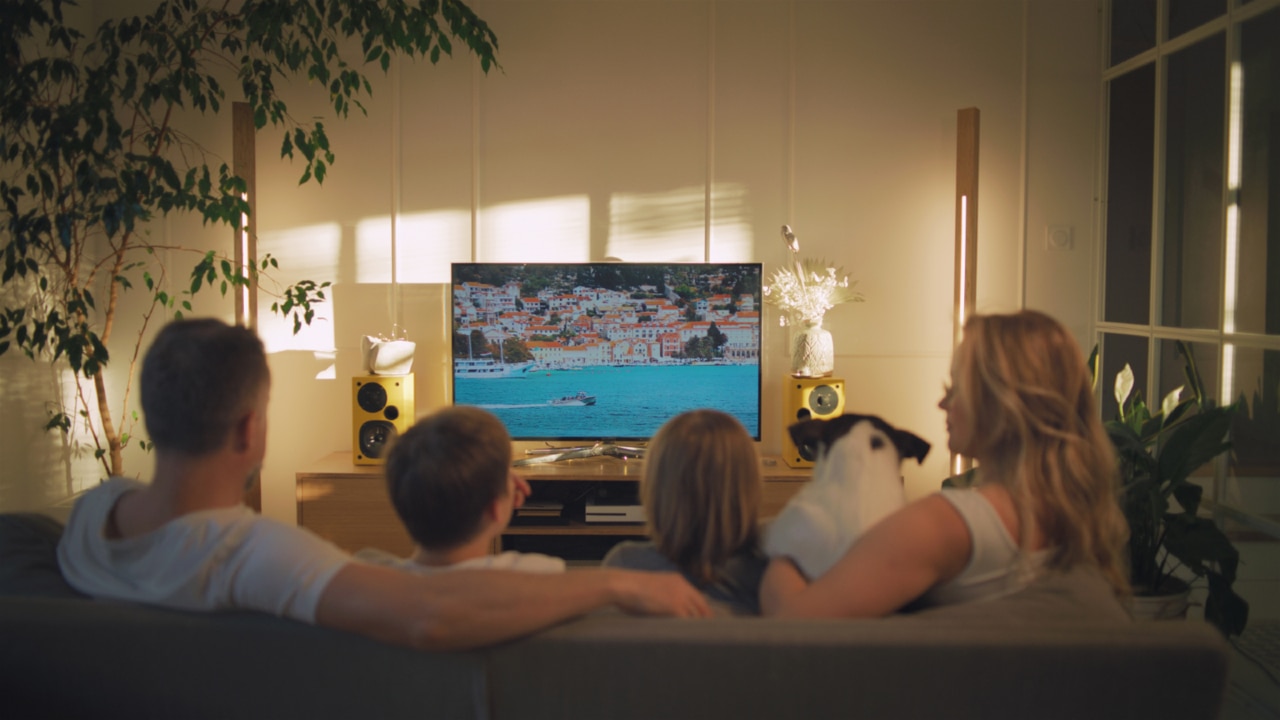The federal and NSW governments have announced a $200 million energy upgrade package in a bid to ease cost of living expenses to more than 30,000 homes across the state.
The package will be used towards energy saving upgrades in social housing properties and allow for greater access to solar energy for low-income renters and apartment residents.
Social housing properties will be a priority for the package as they are among the "least energy-efficient homes" in the country, often lacking basic insulation and modern appliances which can then drive up power bills for residents.
Upgrading an "average" home from a 1-star rating to a 3-star rating can reduce energy consumption by 30 per cent and provide relief for households amid the cost of living crisis, a joint government statement said on Tuesday.
"This is a commitment that will assist 30,000 households to get access to the cheaper energy that comes from clean, renewable energy and it's an exciting project for people living in social housing, in public housing, and low income households," Prime Minister Anthony Albanese said on Tuesday.
Mr Albanese said the package would deliver cheaper power bills for residents and a transition to clean energy which was "not only good for the environment, good for the climate" but also "good for lowering energy prices".
Both governments will provide a matched funding of $87.5 million, amounting to $175 million in total over four years, to reduce energy bills for tenants, allowing their homes to stay warm during the winter and cooler during the summer season.
More than 24,000 homes will also be eligible for upgrades such as heat pump hot water systems, ceiling fans, reverse-cycle air conditioners, solar systems, insulation and draught proofing.
The energy package will include social housing owned by the NSW government and those managed by community housing providers.
New South Wales Premier Chris Minns said the package will be part of a "climate change solution" in the state and in Australia overall.
"There are many houses throughout the state, particularly social housing stock, that are too hot in summer, too cold in winter, and as a result, energy prices and costs for the household skyrocket," Mr Minns said.
"As a result of this program, we'll be able to fund solar panels, reverse cycle air conditioning, heat pumps, insulation, to lower power bills for your average consumer, in many cases, up to $500 per household."
Although Mr Minns acknowledged the package would not "solve all problems" for those in social housing, he said it was a "big step" for them.
"Just because you are on public housing does not mean you should miss out on the benefits of renewable energy," the NSW premier said.
Mr Albanese added the package would allow NSW residents to have greater access to clean, cheap energy while also providing cost of living relief to various households.
"Saving energy means saving money, which is why we’re continuing to deliver cost of living relief for families that need it most without adding to inflation," Mr Albanese said.
"This $206 million package will mean 30,000 households across New South Wales will be able to access upgrades that will make their homes more energy efficient.
"We want all Australians to have access to cleaner, cheaper energy. Renewable energy for social housing helps power bills and is good for the environment."
Priority will be given to the least energy-efficient homes, including older homes and those built prior to minimum construction standards, as well as homes in locations that experience extreme hot and cold temperatures.

Mr Minns maintained the government's top priority was to help NSW residents with cost of living pressures.
"Our number one priority is helping people across NSW with the cost of living, and helping with power bills is a key pillar of that," Mr Minns said.
"We are investing to save people money while also getting NSW's energy transition back on track.
"We are proud to partner with the Albanese Government to deliver cheaper, cleaner energy to some of the least energy efficient houses in the country."
Additionally, the federal government was also investing $30 million in an effort to fund rooftop solar installations in apartments or help access a part of a "solar garden" community energy plot for residents.
The program, named the solar banks initiative, aims to deliver rebates of up to 50 per cent of rooftop solar installation costs for multi-unit dwellings.
This aims to benefit low-income households, apartment residents, and those who cannot install or afford solar rooftops by allowing them to purchase an offsite "solar garden" part of a large-scale solar farm if they are eligible for a subsidy.

It is estimated more than 10,000 households will benefit from the solar banks initiative, saving households up to $600 per year, according to the federal and NSW government.
An additional $1 million will be invested in community renewable energy projects in the Far South Coast, which will fund local clean energy projects and generate local jobs in communities.
Minister for Climate Change and Energy Chris Bowen said the initiatives would allow residents to access "cleaner, cheaper" energy.
"Critical energy upgrades in social housing properties and strong solar energy incentives for apartment block residents across NSW will deliver cleaner, cheaper energy to more Australians," he said.

"The Albanese Government is helping those who can’t currently access energy upgrades and solar power reap the rewards of the clean energy transformation.
"Today’s announcement comes on top of our Energy Price Relief Plan, which is supporting 1.6 million eligible NSW households with $500 off their bills."
NSW Minister for Climate Change and Energy Penny Sharpe added the investments into energy efficiency upgrades for social housing properties were "long overdue" and would allow low-income earners to save while carbon emissions are reduced.
"The solar banks program will support over 10,000 apartment dwellers and renters who have traditionally been locked out of owning solar."
https://news.google.com/rss/articles/CBMi5wFodHRwczovL3d3dy5za3luZXdzLmNvbS5hdS9hdXN0cmFsaWEtbmV3cy9jb21tb253ZWFsdGgtYW5kLW5zdy1nb3Zlcm5tZW50cy1hbm5vdW5jZS0yMDAtbWlsbGlvbi1lbmVyZ3ktdXBncmFkZS1wYWNrYWdlLXRvLW1vcmUtdGhhbi0zMDAwMC1uc3ctaG9tZXMtaW4tYmlkLXRvLWRlbGl2ZXItY29zdC1vZi1saXZpbmctcmVsaWVmL25ld3Mtc3RvcnkvOTkzYzY4MDUxOWU1MWVmYzdmOTAzMjVmYjhhNzliZDnSAesBaHR0cHM6Ly93d3cuc2t5bmV3cy5jb20uYXUvYXVzdHJhbGlhLW5ld3MvY29tbW9ud2VhbHRoLWFuZC1uc3ctZ292ZXJubWVudHMtYW5ub3VuY2UtMjAwLW1pbGxpb24tZW5lcmd5LXVwZ3JhZGUtcGFja2FnZS10by1tb3JlLXRoYW4tMzAwMDAtbnN3LWhvbWVzLWluLWJpZC10by1kZWxpdmVyLWNvc3Qtb2YtbGl2aW5nLXJlbGllZi9uZXdzLXN0b3J5Lzk5M2M2ODA1MTllNTFlZmM3ZjkwMzI1ZmI4YTc5YmQ5P2FtcA?oc=5
2024-01-16 07:12:14Z
CBMi5wFodHRwczovL3d3dy5za3luZXdzLmNvbS5hdS9hdXN0cmFsaWEtbmV3cy9jb21tb253ZWFsdGgtYW5kLW5zdy1nb3Zlcm5tZW50cy1hbm5vdW5jZS0yMDAtbWlsbGlvbi1lbmVyZ3ktdXBncmFkZS1wYWNrYWdlLXRvLW1vcmUtdGhhbi0zMDAwMC1uc3ctaG9tZXMtaW4tYmlkLXRvLWRlbGl2ZXItY29zdC1vZi1saXZpbmctcmVsaWVmL25ld3Mtc3RvcnkvOTkzYzY4MDUxOWU1MWVmYzdmOTAzMjVmYjhhNzliZDnSAesBaHR0cHM6Ly93d3cuc2t5bmV3cy5jb20uYXUvYXVzdHJhbGlhLW5ld3MvY29tbW9ud2VhbHRoLWFuZC1uc3ctZ292ZXJubWVudHMtYW5ub3VuY2UtMjAwLW1pbGxpb24tZW5lcmd5LXVwZ3JhZGUtcGFja2FnZS10by1tb3JlLXRoYW4tMzAwMDAtbnN3LWhvbWVzLWluLWJpZC10by1kZWxpdmVyLWNvc3Qtb2YtbGl2aW5nLXJlbGllZi9uZXdzLXN0b3J5Lzk5M2M2ODA1MTllNTFlZmM3ZjkwMzI1ZmI4YTc5YmQ5P2FtcA
Bagikan Berita Ini














0 Response to "More than 30,000 homes in line for major cost of living relief - Sky News Australia"
Post a Comment